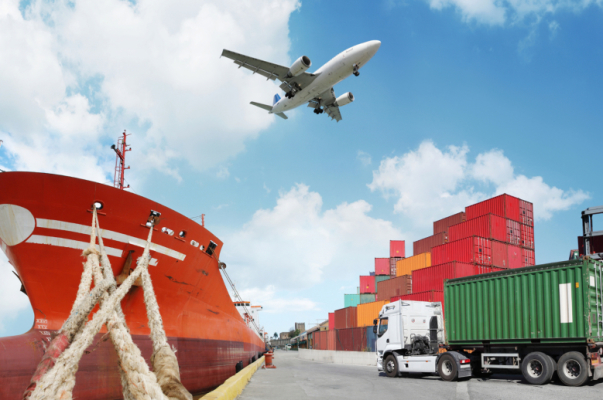Inicio | Seminarios | Eventos | Contacto | Feedback | Newsletters
| | | BUSINESS GROWTH
Newsletters
1 jan 2020
Entrepreneurial Ecosystems
There is research that shows high levels of self-employment can stall economic development: Entrepreneurship, if not properly regulated, can lead to unfair market practices and corruption, and too many entrepreneurs can create income inequalities in society. Overall, though, entrepreneurship is a critical driver of innovation and economic growth. Therefore, fostering entrepreneurship is an important part of the economic growth strategies of many local and national governments around the world. To this end, governments commonly assist in the development of entrepreneurial ecosystems, which may include entrepreneurs themselves, government-sponsored assistance programs and venture capitalists; they may also include non-government organizations, such as entrepreneurs' associations, business incubators and education programs.
For example, California's Silicon Valley is often cited as an example of a well-functioning entrepreneurial ecosystem. The region has a well-developed venture capital base, a large pool of well-educated talent, especially in technical fields, and a wide range of government and non-government programs fostering new ventures and providing information and support to entrepreneurs.
by Will Kenton, Investopedia
1 dic 2019
How long do firms live?
Change is Survival
Finding patterns of company mortality in market data Source: Santa Fe Institute Summary: Sizes of some 30,000
companies traded publicly on US markets from 1950-2009, measured by their sales (controlling for inflation and GDP growth). The relatively rapid growth of smaller companies near the beginnings of
their lifespans account for the ragged lower portion of the chart, as well as the relatively steep initial sales increases. As companies reach maturity, their sales tend to level off. Credit: Marcus
Hamilton and Madeleine Daepp It's a simple enough question: how long does a typical business have to live? Economists have been thinking about that one for decades without a particularly clear
answer, but new research by scientists at the Santa Fe Institute in New Mexico reveals a surprising insight: publicly-traded firms die off at the same rate regardless of their age or economic sector.
"It doesn't matter if you're selling bananas, airplanes, or whatever," Hamilton says -- the mortality rate is the same. Though the number, of course, varies from firm to firm, the team estimated that
the typical company lasts about ten years before it's bought out, merges, or gets liquidated.
by Santa Fe Institute
1 Nov 2019
Comparison between
ISO 9001:2015 and ISO 9001: 2008
| ISO 9001:2008 | ISO 9001:2015 | |
| Structure | Eight clauses | Ten clauses; reorganization of clause order and content to better align with other standards. |
| Context of the organization | No requirement | An organization must determine, monitor and review internal and external issues as well as relevant interested parties and their requirements. |
| Documented information | Six required procedures | Document the QMS scope, objectives, quality policy and any process the organization determines needs to be documented. |
| Risk Based Thinking | Preventative Actions | Organizations must take actions to address risks and opportunities. |
| Exclusions & requirements | Excluding a standard requirement was specific to Product Realization | Any requirement that cannot be applied may be excluded as long as it is justified. |
| Objects, outputs, products and services | Process Based Only | The process model is expanded to include anything that affects quality. |
| Terminology | “Product” “Supplier” “Preventative actions” “Documents and records” |
“Products and services” “External provider” “Risks and opportunities” “Documented information” |
by Standards Stores
1 Oct 2019
The future of world trade: How digital technologies are transforming global commerce.
Trade and technology are closely interlinked. From the invention of the wheel, to the railways, to the advent of containerization,
technology has constantly played a key role in shaping the way we trade – and this phenomenon is accelerating like never before. We are living through an era of unprecedented technological change,
and a series of innovations that leverage the internet could have a major impact. For example, the Internet of Things, artificial intelligence, 3D printing and Blockchain have the potential to
profoundly transform the way we trade, who trades and what is traded.
These developments could unlock many opportunities for individuals, entrepreneurs and businesses around the world. However, this process is not automatic.
Technological advances per se are not a guarantee of greater trade growth and economic integration.
History shows that successfully managing the structural changes driven by technology is central to ensuring that everybody can benefit. Therefore, we need to understand how to harness these new
technologies. This is key to ensuring that the trading system can promote growth, development and job creation, and helping in the effort to deliver the Sustainable Development
Goals.
Key facts and findings
• Digital technologies such as artificial intelligence, the Internet of Things, additive manufacturing (3D printing) and Blockchain have been made achievable by the exponential rise in computing
power, bandwidth and digital information.
• Digital technologies are reshaping consumer habits by shifting purchases online through the widespread use of internet-enabled devices which provide consumers with direct access to online
markets.
• It is estimated that, in 2016, the value of e-commerce transactions totalled US$ 27.7 trillion, of which US$ 23.9 trillion was business-to-business e-commerce transactions.
• On the supply side, digital technologies allow for easier entry and increased product diversity, making it easier for firms to produce, promote and distribute their products at a lower cost.
• The benefits of digital technologies notwithstanding, they are also giving rise to a number of concerns, including market concentration, loss of privacy and security threats, the digital divide,
and the question of whether digital technologies have really increased productivity.
• International trade costs declined by 15 per cent between 1996 and 2014. New technologies will help to further reduce trade costs. Our projections predict that trade could grow yearly
by 1.8 to 2 percentage points more until 2030 as a result of the falling trade costs, amounting to a cumulated growth of 31 to 34 percentage points over 15 years.
• The wide adoption of digital technologies changes the composition of trade in services and goods, and redefines intellectual property rights in trade. Trade in information technology products has
tripled in the past two decades, reaching US$ 1.6 trillion in 2016.
• The importance of services in the composition of trade is expected to increase. We predict the share of services trade to grow from 21 per cent to 25 per cent by 2030.
• Digitalization has led to a decline in trade of digitizable goods (e.g. CDs, books and newspapers) from 2.7 per cent of total goods trade in 2000 to 0.8 per cent in 2016. The trend is likely to
continue with the advent of 3D printing technology.
• Regulation of intellectual property rights, data flows, and privacy as well as the quality of digital infrastructure are likely to emerge as new sources of comparative advantage.
• The decline in trade costs can be especially beneficial for MSMEs and firms from developing countries, if appropriate complementary policies are put in place, and challenges related to technology
diffusion and regulation are addressed. Our estimations foresee that, in such case, developing countries’ share in global trade could grow from 46 per cent in 2015 to 57 per cent by 2030.
• Digital technologies give rise to opportunities and challenges that may require the consideration of governments and the international community in areas as diverse as investment in digital
infrastructure and human capital, trade policy measures and regulation.
• Provisions referring explicitly to digital technologies have been included in an increasing number of regional trade agreements. The most common provisions refer to e-government, cooperation and
the moratorium on customs duties on electronic transmissions.
• While the WTO framework, and in particular the General Agreement on Trade in Services, is relevant for digital trade and WTO members have already taken certain steps to promote digital trade within
the existing framework, members will have to consider how they want to respond to
continued changes in the economy and the way we do business.
by World Trade Organization Report 2018




